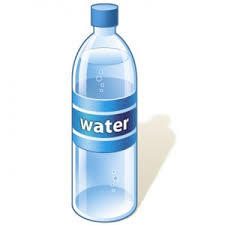Carbon free sugar.
-
-
Dumb as that is, apparently carbonfund.org sells
indulgences from the Popecarbon offsets.
-
hmm without looking at it i would have assumed they meant that they didn't use charcoal filters for the sugar, which is odd, because the only other commercially viable filter that's in common use is bone, and you can't use that and certify Kosher or Vegan friendly if you use the bone filters
-
Discuss.
Is the joke here that carbon-free sugar can't exist and therefore is represented by a broken image icon?
-
No repro, although it did take a rather long time for the image to load. Here, have a Disco-hosted copy of the image:
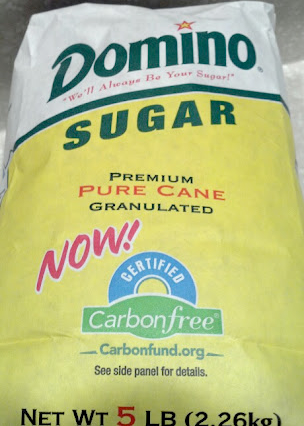
-
Is the joke here that carbon-free sugar can't exist and therefore is represented by a broken image icon?
Thought I'd uploaded the image locally - turns out it was a direct link to a server with a known uptime of something substantially less than 5 nines. OP corrected to account for this fact.
And
 .
.
-
-
You see that little line way down under the CarbonFree label but above the net weight? The one that says, "See side panel for details." We really need a legible picture of the indicated side panel to make proper fun of this.
-
Is that the same image? The one in the OP is lighter...
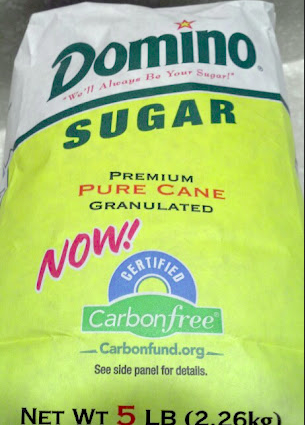

-
That post is already 2 (disco)hours old and still nobody said it is obviously the discosame picture? Maybe a bit disco(co)mpressed.
-
I've looked up that brand of sugar.
The stupid thing is the "carbonfree" label.
What they mean is that it has a zero environmental carbon dioxide footprint, so it actually does make
sense.
-
Blemishes and wrinkles appear the same. If they were different bags, I would expect some variation. The HSL sure is shifted; by trial, the closest I could come was hue, -13; lightness, -6; saturation, -19. Samples, first to last: A difference between the two images; the images overlaid at a diagonal edge; the overlapped images with the right side adjusted by HSL. Don't know...something used the wrong gamma?
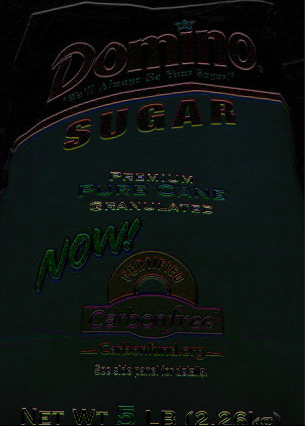
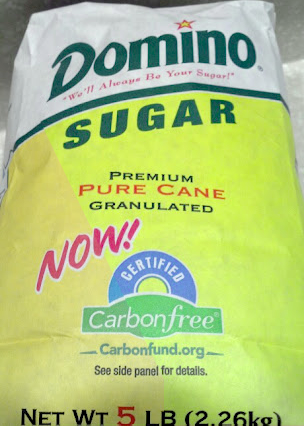
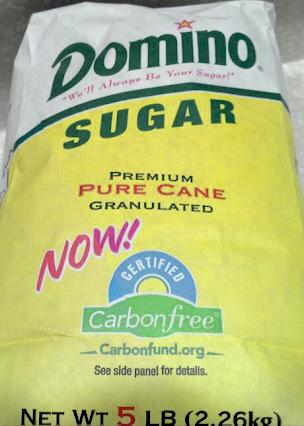
In the last, you can still see the diagonal line, especially in the green and blue areas. Or at least I can.
-
Wow it's like CSI Miami.
-
Zoom in on the 5! Enhance! Oh my god it's E. coli!
-
Is that the same image?
It's discocolored. Apparently this is something that everyone can see except a discodev…
-
ImageMagick is hard to use, people.
-
it has a zero environmental carbon dioxide footprint
I’m now curious whether that includes the carbon dioxide you’ll be breathing out after consuming and digesting said sugar.
-
zero environmental carbon dioxide footprint
This cheeses me off to no end. For starters, sugar is probably already a net negative of CO2 given the vast quantities of CO2 sucked out of the atmosphere as it grows.
The second is the notion that somehow CO2 is a pollutant. But that will start a
 so.... forget it.
so.... forget it.
-
@PWolff said:
zero environmental carbon dioxide footprint
This cheeses me off to no end. For starters, sugar is probably already a net negative of CO2 given the vast quantities of CO2 sucked out of the atmosphere as it grows.
No, that's basically net zero. They put it on a doughnut, you eat the dougnut, then you breath all that CO2 exercising off that doughnut.
-
I’m now curious whether that includes the carbon dioxide you’ll be breathing out after consuming and digesting said sugar.
I think that carbon dioxide may have been removed from the atmosphere during production of the sugar by growing sugar cane.
-
Is that the same image? The one in the OP is lighter...
The one in the OP is clearly the diet version
-
-
-
-
breath all that CO2 exercising off that doughnut.
Not me! My gut stores lipids with up to 20 C's per fatty acid molecule. Only 12 C's per sugar molecule on intake! My body is a Carbon-Storing machine!
by growing sugar cane.
Personally I think the fact that most plant matter comes from THIN AIR + SUNLIGHT around us should make more people go
 .:
.:
-
Not me! My gut stores lipids with up to 20 C's per fatty acid molecule. Only 12 C's per sugar molecule on intake! My body is a Carbon-Storing machine!
From a book by Rick Cook (probably badly quoted but with the right sentiment): "The vultures circled overhead, looking down on me, thinking, 'One day, man, one day, you, too.'"
Over the long haul...net zero. And not on geologic time scales, either.
-
That is not dead which can eternal lie, And with strange aeons even death may die.
-
I thought the original was,
FBIA Guy: Turn the bag, there's an impression of an object in the side. What is that?
Batman: We don't know what it is? Oh, we can turn the bag but don't have X-Ray vision. Where's Superman, maybe he can look at the recording.
Superman: Bruce.... Bruce... it's a fucking recording Bruce.
Batman: Just use it.
Superman: Ok, I see the inside of the monitor. Happy now.
(Enemy of the State featuring Batman and Superman?)
-
My guess is that they use carbon offset credits or (much less likely) renewable energy for all the energy it takes to boil the sugar out of the cane. Renewable still strikes me as unlikely, since they typically supplement the boilers with the remains of the sugar cane from the previous batches. I suppose they could be selling it as animal feed or using it to compost, however.
-
But, if they're boiling, we are sure there is no way they're releasing carbon into the atmosphere?
-
Every documentary I've seen on cane sugar production involved taking the sugar cane and shredding it and crushing it into little bits to squeeze out all the juice. Then you dump that -- all of it -- into water and heat it. You heat that for awhile and the cane pieces break down somewhat and the sugar is largely leeched out of the woody stalks. What you end up with is a sugar slurry. You take out all the liquids because that's where your product is. The stalks still remain behind as a bunch of useless cellulose. The sugar slurry has much of the molasses separated out, then it's evaporated (using different kinds of boilers or heaters) into raw sugar and together that's what gets shipped to refineries to turn it into molasses, brown sugar, white sugar, and powdered sugar.
The part I'm talking about is the remaining useless cellulose and the boilers they use. Most plantations supposedly just take the leftover cane cellulose and burn it in their boilers and use it for fuel. I can't possibly imagine that they've got enough cane waste to have enough fuel to to be 100% self-sustaining. I'm guessing they've got to supplement it with some other form of fuel. My guess is fuel oil, natural gas, coal, or some other cheap fuel source, although I suppose it might be electrical.
Now, I could be wrong about this. I'm making a lot of assumptions. I'm much more familiar with the beet sugar process since that's what they make around here where I live, and I think I visited the sugar mill about three times on school field trips growing up. However, I can't imagine the process is all that different. Maybe they use chemicals to break down the cane stalks or have to take extra steps, but once you're at the sugar slurry point the process has to be basically identical. Here, we don't burn (or don't always burn) the leftover mash (or whatever its called). It gets sold as an ingredient for animal feed, because there's still enough sugar left to taste good to pigs and cows, and they like beets. I'm not sure if sugar cane can be similarly used, but my guess is not.
-
I'm much more familiar with the beet sugar process
How bad is the smell when it's processing season?
Also, as much sugar as Americans eat, apparently we could save 3.5 billion dollars if we ended sugar subsidies to the beet sugar mills.
-
How bad is the smell when it's processing season?
You ever microwave cauliflower to steam it? You ever smell pig shit in August? It's like a nice mixture of both those things.
-
I can't possibly imagine that they've got enough cane waste to have enough fuel to to be 100% self-sustaining. I'm guessing they've got to supplement it with some other form of fuel. My guess is fuel oil, natural gas, coal, or some other cheap fuel source, although I suppose it might be electrical.
But if they're boiling the waste, isn't that releasing carbon?
-
I guess they're counting on planting extra trees elsewhere to offset the carbon they emit.
-
Which is why I said: "My guess is that they use carbon offset credits or (much less likely) renewable energy for all the energy it takes...."
However, you've got to also remember that the first thing they do after they harvest a crop is plant the next year's crop, and they plan on growing about the same amount that they just harvested, so they're planning on spending the next year extracting the exact same amount of carbon that they just harvested. In that sense, all farming is sort of carbon-neutral.
Furthermore, all the carbon from the crop isn't all released into the atmosphere. A lot of is is in the sugar itself. It's going to be used for, well, whatever plants and animals use carbon for. Some, probably most of it, will doubtless make it's way back into the atmosphere as carbon dioxide after it's been burned in (in all likelihood) human bodies, but some of it will stay as sugar, or become more complex molecules after being broken down. Some of it may even be used for industrial uses. But you can't really blame sugar companies for all the CO2 that their customers produce, even if it's with their product.
-
I guess they're counting on planting extra trees elsewhere to offset the carbon they emit.
If only someone had looked up the website linked in the very first picture in post 2 oh wait.
Renewable energy, carbon offsets, or reforestation/deforestation avoidance.
-
The part I'm talking about is the remaining useless cellulose and the boilers they use
FYI, bagasse board is important cheap material for making furnitures like cupboards.And in some countries, they further ferment bagasse to produced alcohol, and then mix the alcohol with gasoline to produce gasohol as fuel.
-
However, you've got to also remember that the first thing they do after they harvest a crop is plant the next year's crop, and they plan on growing about the same amount that they just harvested, so they're planning on spending the next year extracting the exact same amount of carbon that they just harvested. In that sense, all farming is sort of carbon-neutral.
Depends on what they use to fertilize, how they collect the crop, etc.
If they are using machines, are they all electric, with electricity from green energy.
If they are using humans, well.... humans fart.
How do they distribute the product? Do they use trains? Electric trains? That use solar energy.
In reality there are so many moving parts, it's just better to estimate and then round down "80% green energy used to make this product". Same thing they do for recycled paper.
Which, ironically, it usually takes more effort to recycle paper, and certainly more cost, which likely means more carbon footprint.
tl;dr?
Green energy is a luxury.
-
If they are using humans, well.... humans fart.
Not nearly as much on average as cows do. You might have coworkers who buck this trend…
-
Well you know, I'm a programmer, and so I'm surrounded by male coworkers....
-
Personally I think the fact that most plant matter comes from THIN AIR + SUNLIGHT around us should make more people go
 .:
.:
Pretty sure that most plants also require water and (usually soil) nutrients.
-
Yes, but most of the matter in a tree comes from the air! And the water for the trees comes from the air too :) https://m.youtube.com/watch?v=ITpDrdtGAmo see about the 2 min mark.
